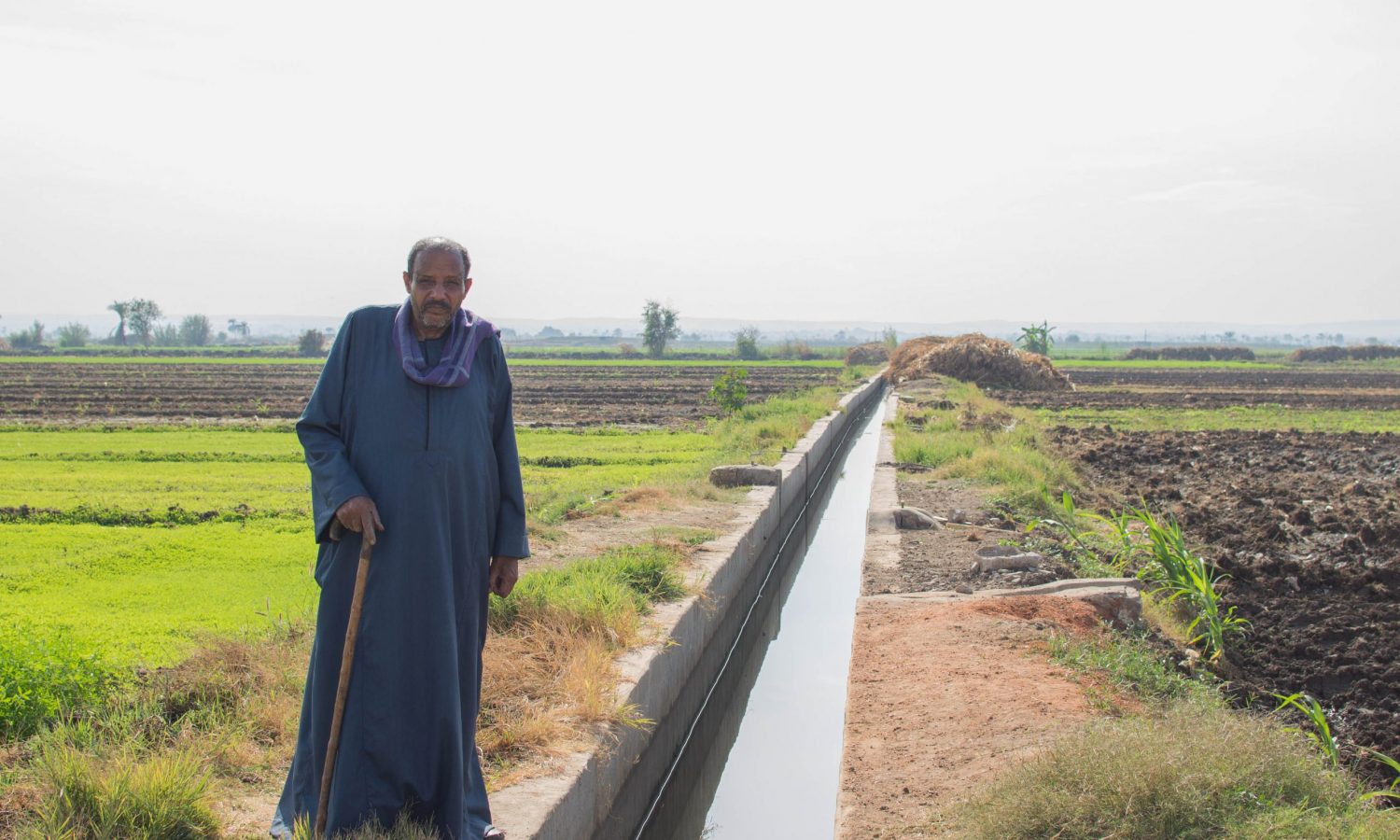Not only do lining canals help use water efficiently, but also they increase agricultural yields. However, canal lining has not been popular in Egypt until recently. Water leakage, higher costs of fuel and canals purification are the main problems with mud-made canals. Hamzawy Ibrahim, a farmer in Nazza Karar village, Assiut governorate says: “We used to purify canals 4 times per season with a cost of 100EGP/ feddan each time in addition to fuel and labor”. New canals occupy 1.20 square meters only instead of 5-meter mud canals. The space left after building the new canals is cultivated. Snakes, rats, mosquitos and all sorts of insects living in mud canals used to damage a valuable portion of the crop yield. Lining canals reduces time and fuel consumed on water uplifting engines. “It takes two hours to irrigate the land, half the time spent before”, Zakaria Gaber, farmer at Nazza Karar underlines. Less fuel and time means more yield and profits for farmers. Despite of scarcity of water resources, most farmers still follow the same old irrigation techniques. Out of the belief in the importance of developing the agriculture sector as a gateway to achieving socio-economic development in Upper Egypt, CARE, through Hayat Kareema project, introduces innovative irrigation systems to improve the efficiency of irrigation and agricultural systems in Upper Egypt. The EU- funded project offered sub-grants to cooperatives and local civil society associations to construct new-concreted irrigation canals. Marwa Hussein, the Agriculture and Natural Resources Program Director at CARE Egypt says:
“lining canals helps thousands of farmers reduce costs of production and increase their yields, thus improve their profitability for years to come”.Hamzawy and his neighbors set an example for more farmers to follow. “Other farmers see how beneficial the new canals are and decided to build their own canals”, he says. Farmers have also enhanced the system by adding a metal door to block and/or unblock the water flow in the canal. As a result of these interventions, more farmers now are interested in this model. CARE has provided one kilometer of concreted canals in the village. “We still need 5 kilometers here in the village while other farmers in surrounding villages still do not have any concreted canals”, Hamzawy highlights. After the project completion, farmers who own large pieces of land already built canals on their own expenses; however, small farmers cannot afford the expenses. “In order for this system to be 100% efficient, we need everyone to be onboard”, Hamzawy adds. “We thank CARE and the European Union for helping us and wish to see more canals in the village soon”, Zakaria says.
Lining irrigation canals increases Hamzawy profits


